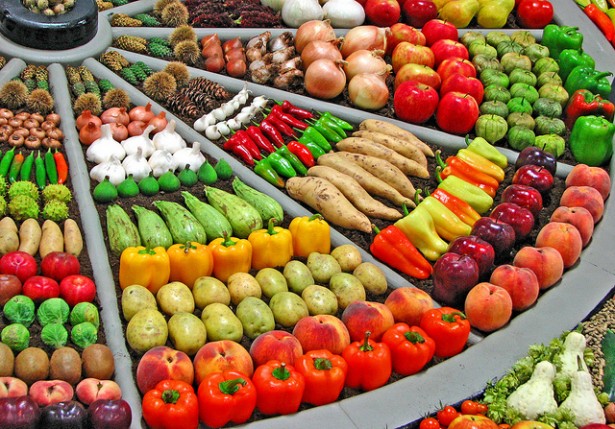Is this diet right for you?
- 4 ways your child may not tolerate cow’s dairy: allergy, milk protein sensitivity, cerebral folate deficiency, and lactose intolerance - January 3, 2024
- 5-hydroxytryptophan (5-HTP) and the “feel good” neurotransmitter serotonin - October 4, 2023
- Quercetin supplementation for children: research, safety and efficacy - May 13, 2023
This month I have been teaching a nutrition course at the new Green Path Herb School here in Missoula. I have an awesome group of students who are eager to devour information about how to use nutrition to heal themselves. I get asked this question a lot: “What diet should I eat?” When I’m teaching for a crowd, the answer is usually “it depends.”
I really believe that diets should be personalized to the patient. Different patients have different nutritional needs. Some need more magnesium, for example, as a cofactor for neurotransmitter synthesis. Some need high levels of antioxidants for inflammation and pain control. Some need more minerals as they go through a detoxification process. Some need more cruciferous vegetables to help process hormones (especially estrogen).
But this month, in prepping for my next nutrition lecture, I rediscovered my absolute favorite go-to diet: the anti-inflammatory diet. Most of my patients will receive more detailed nutritional advice than just this, but it is a great starting place. In fact, most of the dietary recommendations I give are really just variations of the anti-inflammatory diet.
The anti-inflammatory diet
Why reduce inflammation? Inflammation itself is a good thing: it provides blood and nutrients to injured tissues to help the body repair. But when inflammation occurs in the absence of infections or wounds it is no longer helpful but harmful. “Bad” inflammation is thought to be responsible for many conditions, including asthma, autoimmune diseases, atherosclerosis, allergies, inflammatory bowel diseases, and even certain cancers. Lots of inflammation can increase a person’s risk of cancer, heart attack or stroke.
This diet helps decrease inflammation by changing the ratio of inflammatory and anti-inflammatory fats and providing nutrients that are anti-inflammatory. Many of these nutrients work by scavenging free radicals that can damage cells.
The anti-inflammatory diet is also beneficial because it is very high in minerals and vitamins that also help the body function normally. Many nutrients are co-factors for important enzymes that help us generate energy for our cells.
A note before you get started: always check with your doctor before starting any new diet. Even the most general recommendations like “drink more water” aren’t always appropriate for everyone and can be harmful to some.
Grains
Choose whole grains instead of refined flours. Whole grains include brown rice, quinoa, gluten-free oatmeal, millet, buckwheat, and amaranth. Whole wheat, spelt, rye and barley should only be used if an elimination-challenge diet has revealed no sensitivity to gluten. (Eliminate gluten for a minimum of 4 weeks. Challenge gluten by eating 2-4 servings of gluten-containing food like bread or crackers, for 1 day. Wait 4 days. No symptoms means no gluten intolerance.)
Note that some patients do not tolerate grains well or at all. When this is the case I usually investigate for gut dysbiosis or small intestinal bacterial overgrowth. These patients should not consume grains or any starchy vegetables.
Protein sources
Eat coldwater fish like salmon, halibut, and cod as these are all rich in anti-inflammatory omega-3 fatty acids. Note that farmed fish is not beneficial in any way. Be sure to limit mercury-containing fish – check out this guide.
Wild game is considered an anti-inflammatory meat, and is a wonderful protein source for those who can find it. (We are so lucky to be in Montana!) Wild game is a wonderful baby food when pureed.
Beans, lentils and fermented organic soybean products are all anti-inflammatory.
Minimize intake of red meat, and severely limit non-organic and grain fed meats, as these are considered inflammatory protein sources. Limit consumption of dairy products. (For highly inflammatory patients I usually do a full dairy and gluten elimination.)
Vegetables
Aim to eat a variety of vegetables daily, at least 7 servings (1 cup of uncooked leafy greens or 1/2 cup of cooked vegetables is considered one serving). Vegetables, contrary to popular beliefs, are excellent when eaten at breakfast as they supply the very needed B vitamins for energy production throughout the day. Eat colorful vegetables, as the different colors have unique phytochemicals which are anti-inflammatory.
Cruciferous family vegetables (also known as Brassicaceae family vegetables) also provide sulfur compounds to help the body process and eliminate toxins, hormones and carcinogens. Cruciferous vegetables include broccoli, cauliflower, bok choy, green and red cabbage, arugula, and radishes. Aim to eat 1-2 servings of cruciferous vegetables each day.
Fruit
With fruits the general rule is the stronger the pigment the more anti-inflammatory the fruit. Dark berries are key! Blueberries, blackberries, dark cherries, currants, cranberries, and (in Montana) huckleberries are the best antioxidants fruits. I often prescribe a cup of dark berries to my patients, especially patients who struggle with edema (swelling), hemorrhoids or varicose veins.
You absolutely must eat the peel of the apple/peach/pear, etc., to get the most potent anti-inflammatory benefit. Sweeter fruits tend to be less anti-inflammatory than the sour/tart or dark colored ones.
1+ cup of dark berries plus 3-4 servings of fruit is usually sufficient for most of my patients.
Also, dessert should probably always consist of fruit! What better natural dessert is there?
Nuts/seeds
Many patients can benefit from consuming 1/8-1/4 cup of nuts per day. Raw nuts are preferred. Next best is freshly roasted. Nuts are quite susceptible to rancidity from oxygen and heat, so store in a closed container, preferably in the fridge. Eat them up quickly and toss any that have an “off” flavor. Especially beneficial nuts include pumpkin seeds, sunflower seeds, almonds, cashews, Brazil nuts, flaxseed, sesame seeds, and walnuts.
Nuts are a great blood-sugar balancing snack.
Fats
Olive oil is the mainstay in our house for light sauteing, salad dressings, and marinades. It is quite susceptible to oxidation under high heat, so keep the pan temperature medium or medium-low (well below smoke-point) to prevent this. Olive oil is the mainstay of the Mediterranean diet, which is one of the best-researched diets for overall cardiovascular disease prevention, cancer prevention, and promotion of longevity.
Flaxseed oil is a great salad dressing or used for cold-prep dishes.
All patients should decrease their consumption of omega-6 fatty acids from corn, peanut, safflower, sunflower and soybean oils.
Definitely say “bye-bye” to trans-fats or artificially hydrogenated fats.
And how about dairy fats? Dr. Erika thinks the jury is still out out. I know the Weston A. Price foundation has done a lot of good research about dairy fats which show high levels of beneficial vitamin K2 (so important for proper bone formation). Animal fats are necessary for life and proper vitamin status. However, the vast majority of research shows that high consumption of animal fats contributes to increased oxidative stress and a greater risk of heart attack and stroke (not to mention cancer and shorter life spans). I do not recommend cooking in butter, but consuming small to moderate amounts of grass-fed butter is probably sufficient to provide enough vitamin K2. Unfortunately, in my practice I rarely see patients tolerate dairy products, even butter, very well. I stick with olive oil and most of these patients do quite well.
Herbs and spices
The vast majority of herbs and spices contain potent anti-inflammatory properties. The plant constituents (phytochemicals) that make an herb or spice fragrant are almost always the same that provide anti-inflammatory and anti-microbial actions. Think of it this way: plants make chemicals that increase their own defenses against inflammation and bad bugs – these same chemicals have a similar action in us! For example, Thymol, the monoterpene phenol found in Thyme is a very strong anti-microbial that helps the plant fight off infections. The stronger the “thyme” smell the more of this anti-microbial phenol there is in the plant. The stronger the smell the stronger the anti-inflammatory and anti-microbial action!
Of course, when using herbs medicinally there is always a chance of taking too much of these active constituents. (This is one reason I’m not a huge fan of essential oils unless there is something medically I am treating.) But when using whole herbs and spices the chance of “overdoing it” is very small. I often recommend using copious amounts of herbs and spices for three reasons: 1) for the anti-inflammatory action, 2) to increase digestion by enhancing smell and taste and 3) to reduce reliance on fat, salt and sugar for taste. You will be amazed at how little salt you need when heavily spicing your food!
Tea and beverages
Most (but not all) patients can benefit from drinking green tea – one of the most potent cancer-fighters we have. Green tea should be prepared by using water that is not boiling. Either boil water and wait 5 minutes for it to cool, or boil water and add a tablespoon of cold water to a cup before adding the hot water. Green tea should not be steeped in boiling water, it will destroy the delicious and helpful constituents. It also should be steeped for about 1-2 minutes maximum. Doing this will greatly enhance the flavor of green tea.
I also recommend drinking several cups of mineral-rich herbal tea each day. A wonderful herbal blend may consist of some lemon balm, nettles, spearmint, chamomile, alfalfa, lemongrass or oatstraw. Make sure to include the spearmint (or a little fennel) to enhance flavor.
I highly recommend limiting or eliminating coffee and alcohol, at least for a month while your body is healing. Both of these substances deplete B-vitamins and may tax the adrenal glands.
Sweets and “cheats”
Here is where most of us go wrong: we substitute gluten-free (or paleo or vegan) cookies or cakes for regular gluten-full junk-food. Believe me, we all need to satisfy a craving from time to time, I get it. (I too am guilty.) But swapping out healthy junk food for real junky junk food won’t help in the long run. The best snacks are nuts, fresh fruit, or veggies with humus or nut butter. Try for a one-month wash-out, minimizing sweets and cheats to one special time each time. It takes a lot of planning to get to this point, but the end will be worth it, I promise.
How about you? What are your favorite anti-inflammatory diets and recipes?
photo credit: Nancy D. Regan via photopin cc









Lauren
February 18, 2015 at 11:56 pmHi I have just stumbled across your site and have found it very informative! I know GAPS and Paleo well and people seem to have much success with these but we are still searching. I find it quite encouraging that you don’t shun all grains as most people do these days! I am currently on AIP and it is so restrictive but seems to work for many so I am giving it a try. I am not eating anything except meat, fish, vegetables, olive oil and a little fruit. My naturopath has seen great results with this diet and warns that things like nuts can be highly inflammatory for some. Do you recommend the diet above over AIP? It certainly sounds more diverse! I have uveitis which has left me legally blind and continues to destroy my vision so I don’t have a lot of scope to muck around. I agree that too much meat is no good for anyone but I feel like I eat a lot of it on AIP as there aren’t a lot of choices and I eat tons of veggies but now not sure whether I should stay away from the starchy ones or not as these are my main source of carbs and fill me up. Any thoughts? Thanks
Diane E
December 14, 2016 at 2:54 pmI found HealingHistamine when it was still “The Histamine Chef”. Her approach is to eat the most anti-inflammatory foods possible. She has a cookbook, and a very informative blog.
HealingHistamine.com